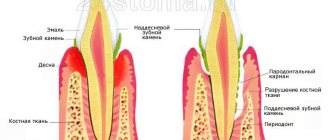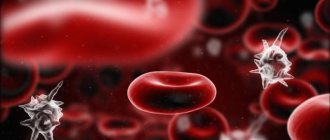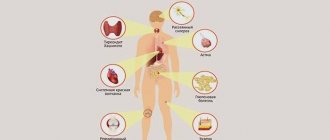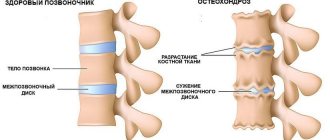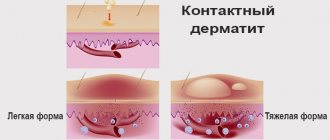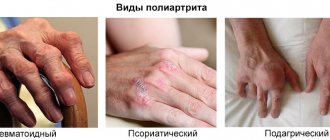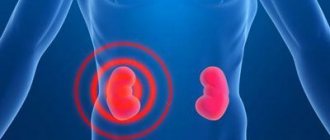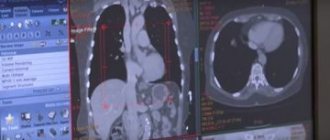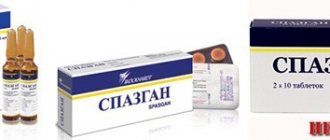The modern lifestyle with its constant rush, snacking on the go and an abundance of unhealthy food is often one of the main causes of our diseases. According to statistics from the Ministry of Health, about 50-60% of the adult population suffers from diseases of the digestive system1.
Symptoms of gastrointestinal (GIT) disorders are familiar to many: heaviness after eating, abdominal discomfort, diarrhea, nausea and problems with stool.
Gastrointestinal diseases can lead to extremely unpleasant consequences, such as general dehydration of the body, affecting brain function, intoxication of the entire body, or malignant neoplasms of the digestive system. And, of course, any chronic disease without proper treatment threatens with diseases of other organs, because the human body is a complex natural system in which all elements are interconnected.
Terms and classifications
The term “gastrointestinal tract” is very old, taken from anatomy. It implies and justifies its name - the stomach and intestines. More precisely, let's say - from the place of attachment of the esophagus to the anus. This means that only the pathology of these organs should be considered diseases of the gastrointestinal tract.
Modern knowledge about the digestive system has accumulated many facts about the inextricable connections between the work of the stomach, the causes of intestinal pathology and the functioning of other organs - the liver, gallbladder and ducts, and pancreas. Today's medical professionals more often use the term “diseases of the digestive system”; the old name refers to its expanded concept.
The International Statistical Classification has identified a separate class of diseases and calls it “Diseases of the digestive organs.” However, let us explain the features of statistical accounting. Gastrointestinal diseases in this group exclude the pathology that we are accustomed to attributing to digestive problems:
- diseases caused by infection (intestinal, parasitic, viral, including a large group of acute intestinal disorders, helminthiases, viral hepatitis) are classified as infectious;
- malignant and benign neoplasms of the stomach and intestines are included in a separate section of tumors;
- diseases of the veins and arteries such as ischemia, varicose veins, phlebitis, thrombosis (we are interested in portal vein thrombosis, pylephlebitis, hemorrhoids) are respectively considered in vascular pathology.
The list of diseases would be incomplete without congenital anomalies and defects (for example, achalasia of the esophagus)
Therefore, when territories report a stable state of gastrointestinal morbidity, they separately take into account the growth of viral hepatitis, outbreaks of intestinal infections, the danger of cancerous degeneration and identified new cases of neoplasms.
According to statistics published by the Ministry of Health, the number of gastrointestinal diseases has been trending downward in recent years. It firmly holds 4th–6th place in the total number after diseases of the respiratory system, genitourinary system, and skin (excluding injuries).
However, targeted studies and visits to medical institutions allow us to conclude that:
- up to 60% of the adult population suffer from digestive system disorders, and in large cities and metropolitan areas - up to 95%;
- among visits to therapists, gastrointestinal problems account for 37%;
- Men under 50 years of age suffer from peptic ulcers 3 times more often than women:
- ulcerative changes in the duodenum exceed those in the stomach by 8–10 times;
- the population remains insufficiently informed about the possibilities of early detection and timely diagnosis of malignant neoplasms of the stomach and intestines.
Data from attending physicians indicate that 4.5–5% of people in the Russian Federation die annually from diseases of the digestive system. In the structure of cancer mortality, colorectal cancer ranks second, and stomach cancer ranks third.
Doctors of various specialties treat diseases of the gastrointestinal tract: therapists, pediatricians, gastroenterologists, infectious disease specialists, oncologists, surgeons.
Disease Prevention
It is possible to prevent the development of diseases of the digestive system or its exacerbation. To do this you need:
- Normalize your diet. Complete, properly prepared food should be divided into 3 to 5 meals. You should set aside a separate time for eating. You should not eat on the go, at the computer, or in front of the TV.
- Reduce the impact of environmental factors on the food you eat, use water filters and environmentally friendly products.
- Get rid of bad habits. Nicotine and alcohol have a toxic effect on the gastrointestinal tract, causing peptic ulcers and cancer.
- Carry out timely diagnosis of genetic diseases (celiac disease, etc.) and compliance with the recommended diet and regimen of diagnostic procedures.
- Follow the rules for preparing and storing food.
- Reduce stress effects on the body.
- Carry out timely diagnosis and treatment of infectious and parasitic diseases (especially in children). This facilitates the course of the acute process and reduces the percentage of formation of chronic diseases.
- Treat diseases of other organs and systems that affect the gastrointestinal tract.
- Observe work and rest regimes, eliminate ultra-high loads.
What happens in the human digestive tract
The main functions of the digestive system are:
- motor-mechanical - allows you to crush, mix and move the food bolus along parts of the tract, remove toxins from the body;
- secretory - responsible for the chemical processing of food particles with the connection of various enzymes found in the juices of the organs concerned;
- absorptive - ensures the selection and assimilation from the contents of only the substances and liquids needed by the body.
In recent years, another importance of the digestive organs has been proven - participation in the synthesis of certain hormones and elements of the immune system. Diseases of the stomach and intestines are caused by a malfunction of one or more areas.
Of particular importance is the sufficient functioning of the duodenum, liver, and pancreas. According to their anatomical structure, these organs are very closely related to the gastrointestinal tract. Disruption of their work leads to dysfunction of the entire gastrointestinal tract.
Treatment of gastrointestinal diseases
Due to the fact that the list of gastrointestinal diseases includes different pathologies, they are treated with different, sometimes opposite, means.
- The diet for most diseases consists of a balanced diet, including chemically, thermally and physically gentle foods. Soups, porridges, steamed cutlets, boiled, grilled, stewed, chopped and boiled are the basis of the menu for patients with gastrointestinal pathology. For acute pancreatitis, a starvation diet is recommended. For diarrhea, the menu is dominated by rice, jelly and chokeberry. With constipation, the proportion of vegetables, fruits and vegetable oil increases. Alcoholic drinks, coffee, fatty, fried, spicy, spicy, seasonings, sauces, fast food, canned food, sausages and semi-finished products are excluded from the diet.
- Plants used for diseases of the gastrointestinal tract number more than a hundred names. Prescribed by a doctor in accordance with the diagnosis.
- Mineral water.
- Medications.
- Physiotherapeutic treatment.
- Surgery.
The doctor recommends treatment based on the form of the disease, its stage, the patient’s age and other indicators.
The most important causes of gastrointestinal disorders
An important cause of diseases of the digestive system is poor nutrition. Main mistakes:
- long breaks in food intake - disrupt the reflex mechanism of the production of digestive juices, allowing significant concentrations of enzymes to accumulate in the stomach and intestines without food intake, which causes dangerous damage to one’s own mucous membrane;
- the predominance of fatty meat foods, fried and smoked foods, hot seasonings and sauces - contributes to the failure of the formation and flow of bile into the intestines, congestion in the bladder and increases the risk of stone formation;
- excessive consumption of alcoholic beverages - has a direct toxic effect on liver cells, the mucous membrane of the stomach and intestines, leads to increased consumption of enzymes, atrophic processes, promotes atherosclerotic damage to blood vessels and impaired nutrition of the walls;
- consuming foods of contrasting temperatures is an excessive irritant to the stomach; the habit of very hot drinks plays a role in the occurrence of gastritis.
Diagnosis of gastrointestinal diseases
Accurate diagnosis is the basis for the future effective treatment of gastrointestinal diseases. Without knowing the exact cause of unpleasant symptoms, it is impossible to choose the right treatment program. Timely diagnosis can prevent the development of serious diseases and complications.
Diagnosis of gastrointestinal diseases may include:
- General examination by a doctor. Palpation, listening to internal organs, visual assessment of the condition of the skin and mucous membranes will allow the doctor to obtain basic information about the condition of the organs, their size and location;
- Laboratory analysis of blood, urine and feces;
- To determine the level of activity of the pancreas (which is responsible for the production of digestive enzymes), an elastase-1 test is performed;
- Gastroscopy and colonoscopy. Visual inspection of the inner wall of the esophagus, stomach and intestines allows you to carefully examine the condition of the gastrointestinal mucosa;
- Ultrasound examination (ultrasound) is one of the most common methods of diagnosing diseases, during which a specialist examines the structure of the gastrointestinal tract on a monitor screen in real time;
- Radiography. Using a special contrast agent, the doctor can identify on an x-ray image any changes or disturbances in the structure of the stomach and intestines;
- Computed tomography and magnetic resonance imaging are layer-by-layer scanning that forms a 3D image of the organ being examined. This is a very effective diagnostic tool, but sometimes general tests and examination are enough to establish a diagnosis;
- Biopsy. Histological analysis of a small area of pathological tissue is carried out when a malignant neoplasm is suspected.
What gastrointestinal diseases do people encounter most often?
Of the diseases caused by pathology of the stomach and intestines, the following pathologies should be noted as the most common diseases of inflammatory origin.
Gastritis
inflammation proceeds from a more favorable superficial one, to the formation of erosions and atrophy of the inner membrane, very different with high and low acidity, and dyspepsia is sure to occur.
Impaired motor function of the muscular layer of the stomach and sphincters
When the upper cardiac sphincter is weakened, the formation of gastroesophageal reflux disease with reverse reflux of acidic contents and damage to the esophagus is possible. If the contractility of the pyloric part changes, then pylorospasm or reflux of bile from the duodenum appears. This is how biliary reflux gastritis is formed.
Duodenitis
Duodenums, usually a complement and continuation of gastritis, somewhat change the nature of the symptoms. The pain becomes “late”, 1.5–2 hours after eating, and there is an admixture of bile in the vomit.
Gastroenteritis
The general name for diseases of the stomach and intestines, most often caused by infectious genesis, poisoning with low-quality products. They occur acutely with high fever, nausea and vomiting, pain of various localizations, and diarrhea. Children experience a dangerous symptom - dehydration.
Enterocolitis
Infectious and non-infectious lesions of the intestinal mucosa, possible manifestations of dysentery, typhoid fever, cholera. Patients are bothered by spastic pain in the left or right half of the abdomen, false urge to go to the toilet (tenesmus), and fever. The whole body suffers from intoxication.
Appendicitis
Local inflammation of the appendix has its own symptoms, but always requires differential diagnosis due to the anatomical features of the location.
Haemorrhoids
A disease of the rectal veins that affects the majority of the adult population. In origin, a tendency to constipation, sedentary work, and difficult childbirth in women are important. It manifests itself as severe pain in the anus, itching of the skin, and bleeding during bowel movements. Lack of treatment leads to the transfer of inflammation from dilated veins to nearby tissues, pinching of venous nodes, formation of cracks in the rectal mucosa, and cancer.
Dysbacteriosis
It is not considered an independent disease, but due to the nature of digestive disorders, the condition requires correction, additional therapy and special examination of stool for intestinal flora. It can be caused either by inflammation or by medications.
A decrease in the proportion of beneficial bifidobacteria and lactobacilli contributes to disruption of food digestion and activates opportunistic bacteria. Prolonged diarrhea is especially difficult for young children.
Peptic ulcer of the stomach and duodenum
Persistent painful symptoms, seasonality and damage to the mucous membrane up to the muscular layer, signs of bleeding are found in the stool. Severe complications are possible in the form of perforation of the ulcer into the abdominal cavity or neighboring organs. They manifest themselves as dagger pains and the patient’s state of shock.
Neoplasms of different localization
This includes polypous growths and cancer. Tumors form under the influence and against the background of various gastroenterological diseases. It is known that colorectal cancer is transformed from colon polyps, stomach cancer from atrophic gastritis.
Symptoms and treatment of gastritis of the antrum of the stomach
If the tumor grows inward, then manifestations are detected by a mechanical obstruction to the movement of feces (constipation). With external growth (exophytic), symptoms are not detected for a long time or have general intestinal manifestations (vague pain, unstable stool).
Quite rare gastrointestinal diseases include:
- Crohn's disease is a severe lesion of the entire digestive “tube” from the oral cavity to the rectum, in half of the cases - the ileum and rectum, and is classified as a hereditary autoimmune pathology in origin. The exact reason is unknown. Granulomatous growths grow throughout the entire thickness of the intestinal wall. The clinical manifestations are characterized by diarrhea, abdominal pain, and prolonged fever. It occurs as inflammation, spasm or perforation with the formation of fistula tracts.
- Whipple's disease - affects mainly men, is considered an infectious disease (the causative bacterium is isolated), but researchers emphasize the role of an excessive perverted reaction of the immune system. It manifests itself as prolonged diarrhea, fever and general symptoms (joint pain, damage to the skin, heart, eyes, hearing, neurological signs).
In a hiatal hernia, a protrusion into the chest cavity forms the esophagus and the upper edge of the stomach
Causes
Normally, food that enters the intestines is broken down into simpler components under the action of enzymes. The resulting beneficial substances are absorbed, and feces are formed from the remains of the food bolus, which are excreted from the body. Violation of any of these stages leads to intestinal dysfunction.
Basic mechanisms:
- Maldigestia. Digestion of food. The product enters the duodenum, but does not break down into components that are convenient for absorption. This can occur due to a deficiency of pancreatic enzymes, secretion of a small volume of bile (it serves as an activator of pancreatic enzymes).
- Malabsorption. Absorption disorder from the small intestine. Food breaks down into the necessary substances, but is not absorbed by the body.
- Putrid dyspepsia. Impaired digestion of proteins. Accompanied by putrefactive processes in the intestines and increased gas formation. May be a consequence of maldigestion.
- Fermentative dyspepsia. Impaired digestion of carbohydrates. It can be primary and secondary (with an excess of carbohydrates in the diet).
- Violation of intestinal evacuation function. Diarrhea, constipation. Accelerated evacuation occurs when a physical stimulus acts on the intestinal wall and against the background of a violation of the nervous regulation of motility. A slowdown in fecal excretion can be observed during fasting and congenital disorders of peristalsis (Hirschsprung's disease).
These syndromes are closely interrelated and can be combined with each other.
Non-pathological cases
Not every intestinal disorder is a sign of illness. Functional dyspepsia may occur in healthy people. It is not accompanied by persistent pathological changes in the intestines, is quickly reversible and does not entail dangerous consequences.
Nutrition
Some foods have a laxative effect.
We recommend reading:
Does meat rot in the intestines?
Diarrhea can be caused by:
- sweeteners (erythritol, sorbitol);
- drinks (coffee);
- vegetables (beets, carrots);
- fruits, berries (plum, prunes, avocado, watermelon);
- fresh dairy products;
- vegetable oils.
When food is stored improperly, pathogenic and opportunistic bacteria begin to multiply in it. When consuming a small amount of such food, a protective mechanism is activated: the food is quickly evacuated (diarrhea occurs), without having time to be absorbed along with toxins.
A number of relatively healthy patients have intolerance to certain foods (not to be confused with severe malabsorption). It does not arise due to disease, but due to genetic characteristics. Up to 80% of Asians do not tolerate milk well. Their body, unlike Europeans, is less adapted to absorb lactose included in this product.
Overeating can cause intestinal upset. Due to the fact that the body cannot secrete the required amount of enzymes for the entire volume of food, functional maldigestion occurs. Food that has not had time to break down irritates the intestinal walls and undergoes accelerated evacuation.
Pregnancy
Diarrhea in the early stages of pregnancy is often a consequence of toxicosis. During pregnancy, a woman's eating behavior changes: she begins to eat large amounts of food and eat incompatible foods. Such changes lead to functional diarrhea. In later stages, diarrhea may give way to constipation. This occurs due to a decrease in intestinal motility under the influence of progesterone and due to compression of the organ by the growing fetus. Functional diarrhea occurs several days before birth. The body prepares for the birth of a child and launches a natural cleansing of the intestines. Such diarrhea is never accompanied by fever and has virtually no effect on the general condition of the woman.
Read more: Stomach and intestinal upsets during pregnancy
Menstruation
In healthy women, slight diarrhea may occur before or at the beginning of menstruation. It is caused by biologically active substances prostaglandins, which stimulate the contractile activity of not only the uterus, but also the intestines. Intestinal dyspepsia occurs according to the type of accelerated evacuation. A certain role in premenstrual syndrome is played by changes in food preferences and increased nervous excitability.
Infancy
Liquid, mushy stool in an infant cannot be immediately associated with diarrhea. At this age he is physiological. Caused by dietary habits (lack of solid food) and age-related imperfections in the gastrointestinal tract. Babies have a different level of stomach acidity; their body is not yet able to secrete the required amount of enzymes to digest adult food. Feces gradually become formed after the introduction of complementary foods (products that are denser than milk or formula).
Stress
Intestinal motility is dependent on the action of the sympathetic nervous system. During periods of stress, it causes a slowdown in organ motility and spasm of the sphincters, preventing the act of defecation. But the nervous irritant can be so pronounced that the opposite effect occurs - nervous diarrhea (“bear disease”). In a healthy person, this intestinal disorder does not recur after eliminating the source of stress.
We recommend reading:
The most common infectious bowel diseases
Pathological cases
Intestinal dyspepsia can be a sign of a persistent breakdown of protective and regulatory mechanisms. In such situations, specialist advice may be required.
Intestinal infections
Main article: Intestinal infections: symptoms and treatment
Sources: patients and carriers. Each etiology is characterized by clinical features. Main types of intestinal infections and examples:
- Bacterial. Dysentery, cholera, salmonellosis. Dysentery is characterized by a false urge to defecate (tenesmus), frequent but scanty stool streaked with blood. A sign of cholera is copious watery bowel movements with uncontrollable vomiting, similar to rice water. Salmonellosis is caused by green, foul-smelling stools.
- Viral. Enterovirus infection, enteral hepatitis (A, E). A combination of intestinal dyspepsia with chills, fever, and severe malaise is typical. The onset of viral intestinal infections can mimic the symptoms of influenza.
- Parasitic. Giardiasis, toxoplasmosis. Intestinal dyspepsia with giardiasis can be combined with biliary dyskinesia.
- Fungal. When consuming products containing molds. Fusariograminearotoxicosis - “drunken bread poisoning.” Intestinal dyspepsia is combined with changes in the central nervous system (euphoria, impaired coordination of movements)
Food poisoning
In most cases, intestinal upset accompanies foodborne illnesses. They are caused not by the direct influence of the pathogen, but by the action of its toxins. One of the common causes of food poisoning is Staphylococcus aureus.
Malabsorption
Main article: Malabsorption syndrome
The body loses some substances due to the inability to absorb them due to enzymatic deficiency. The condition can be congenital or acquired. Primary malabsorption is based on genetic disorders. Examples: fructose intolerance, Hartnup disease (impaired absorption of amino acids).
More often we are talking about secondary malabsorption. An example is stool disorder due to pancreatitis (steatorrhea). The stool is light in color and has the consistency of putty. The changes are caused by the content of large amounts of undigested fat.
Oncopathology
Diarrhea can accompany bowel cancer. Loose stools can occur due to the direct effect of a tumor producing biologically active substances, dysbiosis against the background of a general decrease in immunity. Diarrhea is a common side effect of chemotherapy and radiation therapy.
Irritable bowel syndrome
Main article: Irritable bowel syndrome
Not to be confused with single episodes of diarrhea due to stress. Functional disorder of the intestine, not accompanied by gross organic pathologies. IBS causes chronic abdominal pain, constant bloating, and frequent urge to defecate. There is usually a clear connection between an attack of intestinal dyspepsia and stress.
Ulcerative colitis
Main article: Ulcerative colitis
Nonspecific chronic inflammation of the colon. Out of 100 thousand people, 35-100 people suffer from the disease. The patient may experience frequent bouts of diarrhea with tenesmus. The stool is liquid and mushy. An admixture of blood, pus and mucus is detected.
The role of esophageal pathology
On the one hand, the esophagus is considered in the gastrointestinal tract simply as a connecting tube from the mouth to the stomach, so the condition of the muscle base for “pushing” food matters. But on the other hand, the connection with the stomach causes changes in the mucous membrane in the lower sections and leads to local disease. The most frequently identified pathologies are those described below.
Esophagitis is inflammation with painful swallowing of liquid and solid food, a burning sensation in the epigastric region, heartburn, and belching. The culprit is reflux of acid from the stomach. In severe cases, the disease is called gastroesophageal reflux.
Hiatal hernia - a pathology caused by a violation of the localization of the esophagus, displacement of the lower border, protrusion of the diaphragm from the esophageal opening. The disease can be inherited or formed as a result of long-term inflammatory processes in the esophagus and stomach. The main manifestation is reflux of food into the esophagus with heartburn, belching, pain, bloody vomiting, and difficulty swallowing. Treatment is surgical only.
Barrett's esophagus is the leading cause of esophageal ademocarcinoma. It is detected by fibrogastroscopy after examining a biopsy sample. A sign such as prolonged heartburn is the reason for mandatory examination. Typical detection is the growth of squamous epithelial tissue in place of the esophagus.
If detected, the affected areas are removed using a laser beam. It is still possible to prevent cancerous transformation.
Ulcerative non-infectious colitis of autoimmune etiology is attracting increasing attention due to its spread among children and adults
Serious secondary disorders of the gastrointestinal tract are caused by:
- viral and non-infectious hepatitis;
- cirrhosis with liver and kidney failure;
- diseases of the pancreas from functional disorders to pancreatitis and cancer;
- cholecystitis and cholelithiasis.
Diagnostics
The search for the cause of the disease is based on examination data, laboratory and instrumental research methods. The list of recommended methods is selected individually. Can be assigned:
- Coprogram. Assessment of the composition and consistency of stool.
- Sowing feces on flora. To identify the infectious agent of intestinal dyspepsia.
- Ultrasound of the abdominal organs. Allows you to exclude some secondary causes of intestinal dyspepsia (pancreatitis, gallbladder pathology).
- Endoscopic examinations (using an endoscope). According to individual indications. Colonoscopy (examination of the colon), sigmoidoscopy (examination of the rectum and part of the sigmoid colon). If pathology of the duodenum is suspected, an FGDS is performed.
- Biopsy. Usually performed as part of an endoscopy. Cleavage of a piece of intestinal tissue followed by microscopy. Method of choice for suspected tumors.
- X-ray of the intestines. Performed with contrast. Allows you to evaluate the patency of intestinal loops and their internal relief. Helps to detect wall formations.
Symptoms of gastrointestinal diseases
Therapy of digestive diseases requires taking into account the pathogenetic mechanisms of the occurrence of disorders. It is most correct to treat the gastrointestinal tract according to clinical syndromes.
Dyspepsia
Dyspepsia syndrome includes subjective symptoms. It is customary to distinguish between the gastric and intestinal types. Most stomach diseases are characterized by:
- pain in the epigastric region of varying intensity, but always associated in time with food intake;
- feeling of fullness in the stomach;
- heartburn;
- nausea and vomiting;
- belching;
- loss of appetite.
The combination of these symptoms depends on the nature of the disease, the stage of the process and the degree of functional impairment
So, according to the set of symptoms, dyspepsia is divided:
- for reflux - manifested by a burning sensation behind the sternum, belching, heartburn, difficulty swallowing;
- ulcer-like - the patient experiences intermittent “hungry” pain, worsening may occur at night (late pain);
- dyskinetic - patients complain of heaviness in the epigastrium, a feeling of fullness in the stomach, nausea, loss of appetite, vomiting;
- systemic - characterized by bloating, rumbling in the intestines, stool disorders, and possible painful spasms.
Dyspepsia of the human intestinal tract is accompanied by: flatulence, transfusion and rumbling in the intestines, spastic or bursting pain in the abdomen without constant localization, unstable stool. Symptoms occur when the function of the stomach and intestines is impaired. Observed in hypoacid gastritis, enterocolitis, tumors, adhesions, chronic pancreatitis, cholecystitis, hepatitis.
Signs of intestinal dyspepsia are constant, not related to feeding, more intense in the afternoon, and usually subside by night. They intensify when consuming dairy products and vegetables high in fiber (cabbage, beets). Patients attribute improvement in their condition to defecation and release of gases.
Hyperacid syndrome
Symptoms of gastrointestinal disease with increased acidity of gastric juice appear with gastritis, duodenitis, peptic ulcers, and are typical for heavy smokers. An increased concentration of hydrochloric acid is associated with increased secretion, insufficient neutralization, and delayed evacuation of stomach contents into the duodenum.
Hyperacidity of the stomach is distinguished by the following symptoms:
- heartburn on an empty stomach, after eating, at night;
- belching sour;
- increased appetite;
- vomiting of sour contents;
- pain in the epigastrium and right hypochondrium, “hungry”, late at night;
- tendency to constipation due to spasm of the pylorus and slower evacuation of food masses.
Hypoacid syndrome
Occurs when the acidity of gastric juice decreases. It is observed with stomach ulcers, atrophic gastritis, cancer, gastrointestinal infections, chronic cholecystitis, anemia, and general exhaustion. Signs of hypoacidity:
- poor appetite (in severe cases, weight loss);
- intolerance to certain foods;
- nausea;
- flatulence;
- “hungry” pain in the stomach;
- diarrhea (the pyloric opening is constantly gaping, so the intestinal mucosa is irritated by undigested food).
The nature of the pain is different (spastic or bursting)
Enteral and colitic insufficiency syndrome
Manifested by intestinal and general symptoms. Intestinal symptoms include: pain around the navel 3-4 hours after eating, dyspepsia and dysbacteriosis. The stool is loose, foamy, foul-smelling several times a day, or constipation with atony in old age.
Common symptoms include:
- weight loss due to increased appetite;
- fatigue, insomnia, irritability;
- skin manifestations (dryness, peeling, brittle nails, hair loss);
- iron deficiency conditions, anemia;
- hypovitaminosis with bleeding gums, stomatitis, blurred vision, petechial rash (lack of vitamins C, B2, PP, K).
When should you definitely consult a doctor?
Rare intestinal disorders with an established non-dangerous etiology, without pathological impurities in the stool, or other accompanying symptoms do not require a mandatory visit to the doctor. Signs that should alert you:
- admixture of blood, pus in the stool;
- the occurrence of painful false urge to defecate;
- constant feeling of incomplete bowel movement;
- profuse (abundant, continuous) diarrhea;
- combination of intestinal upset with nausea and vomiting;
- increased body temperature, weakness due to dyspepsia;
- sudden weight loss;
- changes in the properties of stool that are not related to dietary habits (stench, foaminess);
- persistent pain in the abdomen and rectum.
We recommend reading:
Why do gases constantly form in the intestines?
General principles of treatment of gastrointestinal diseases
Treatment of the stomach and intestines cannot be done without following a single regimen, which necessarily includes diet, exercise therapy and physiotherapy outside the acute stage, if the symptoms and examination results do not raise concerns about cancerous degeneration.
Basic menu requirements:
- Regardless of the nature of the pathology of the stomach or intestines, meals should be taken in small portions 5–6 times a day;
- all irritants to the mucous membrane are excluded (alcohol, carbonated water, strong tea and coffee, fried and fatty foods, canned food, smoked foods and pickles);
- the selection of a diet is carried out taking into account the type of gastric secretion of a particular patient; in an anacid state, stimulating dishes are allowed, in a hyperacid state they are prohibited;
- in the first week of exacerbation, crushed, pureed food, liquid porridge with water are recommended;
- expansion of the diet depends on the results of treatment of the stomach and intestines, and the patient’s well-being;
- the possibility of consuming dairy products is decided individually;
- It is necessary to prepare food in stewed, boiled and steamed form.
Dyskinesia and functional disorders of the stomach and intestines can be effectively relieved by physical therapy
Drug treatment
Upon receipt of a conclusion about the presence of Helicobacter in the stomach, a course of eradication with antibiotics and bismuth preparations is recommended. Its effectiveness is monitored by repeated studies. To support the secretory function of the stomach, drugs such as Pepsin, gastric juice, and Plantaglucid are used.
With increased acidity, gastric secretion blockers (proton pump inhibitors) and enveloping agents (Almagel, Denol, Hefal) are needed. To relieve pain, antispasmodics (No-Shpa, Platyfillin) are prescribed. Cerucal helps with hypotonic damage to the stomach and intestines, relieves nausea, vomiting, and activates peristalsis.
To stimulate healing for stomach ulcers, Riboxin, Gastrofarm, Solcoseryl, and anabolic hormones are used. In case of chronic damage to the intestines and stomach with symptoms of vitamin deficiency and anemia, injections of vitamins and iron supplements are prescribed.
Moderate signs of bleeding indicate the involvement of a small-diameter vessel in the process; general anti-inflammatory therapy helps in eliminating it. In case of bloody vomiting and black stools with symptoms of blood loss and signs of obstruction, surgery with resection of the damaged part of the stomach or intestine is necessary.
Cancerous changes are treated with courses of chemotherapy and radiation. The extent of surgical intervention depends on the stage. Physiotherapeutic procedures can improve the regeneration of the epithelium of the stomach and intestines, relieve hypertension, and normalize motility.
For this we use:
- electrophoresis with the introduction of the necessary drug from the active electrode;
- diadynamic currents;
- phonophoresis.
Spa treatment with water and mud applications from natural sources helps to achieve long-term remission.
Phytotherapy
Treatment with herbal remedies should be used after the acute symptoms of inflammation of the intestines and stomach have been eliminated. Decoctions of chamomile, yarrow, calendula, oak bark, and plantain have anti-inflammatory properties.
The enveloping effect on the stomach of oatmeal jelly and flaxseed decoction is beneficial
Diseases of the stomach and intestines are treated by specialists from clinics. Oncologists consider it necessary, for the purpose of early diagnosis of cancer, to conduct ultrasound examination and esophagogastroduodenoscopy for all persons over 40 years of age, even if there are no symptoms.
And if there are complaints about bowel function, try to examine the patient using colorectoscopy. This study is still less accessible and is carried out in specialized hospitals or private clinics. But a timely diagnosis is worth the cost.
Causes of frequent bowel movements
In medical practice, there are several main reasons for frequent bowel movements in an adult, but the stool itself is not of a liquid consistency and therefore does not indicate symptoms of diarrhea.
Any person needs to know the possible causes of this condition.
The reasons may be inflammatory processes in the intestines, in which case the urge to defecate is accompanied by pain, and bowel movements will be frequent.
Initially, such a condition and stool can be controlled, but after a while, bowel movements become uncontrollable.
The main reasons in an adult are:
- Insufficient production of enzymes. Many people may have a failure in the production of enzymes, when there are very few of them in the intestines and foods cannot be digested normally, and accordingly, gastrointestinal problems begin. The lack of enzymes is caused by a malfunction of the pancreas.
- Failure of gastrointestinal tract functions. In this condition, people experience frequent bowel movements, which is caused by various pathological conditions, for example, gastritis, pancreatitis, cholecystitis. The patient begins to feel heaviness, severe gas formation occurs, which leads to frequent urge to defecate.
- Irritable bowel syndrome. This pathology is common, but it is difficult to determine. People with this disease may begin bowel movements immediately after eating. In some cases, it is not possible to finish eating and the urge already appears. With this disease, the patient's stool may change in density, but diarrhea will not appear often.
- Eating more plant foods. Vegetables and fruits contain a lot of fiber, which causes intestinal upset. If such products are suddenly included in the diet, then a rapid change in urges is possible.
- Raw foodism and vegetarianism. In this case, the urge becomes more frequent as a result of incorrectly chosen nutrition. When using raw foods, intestinal activity increases, causing fast and frequent bowel movements.
Any of the reasons described lead not only to frequent bowel movements, but also to changes in stool. They can become of a different density, change shade, and also change smell.
There are other reasons that are not related to nutrition or disease. These include psychological factors. Frequent bowel movements in an adult occur due to constant stress, anxiety and worry.
The human nervous system greatly influences the functioning of the gastrointestinal tract, as well as the condition of the body as a whole.
If you have frequent bowel movements, the cause of the deviation may be:
- A constant feeling of fear, as well as emotional stress that appears on an ongoing basis.
- Schizophrenia.
- Regular stressful situations, many irritating factors.
- There are many different difficulties in life that appear at the same time.
If this condition is not stopped in a timely manner, then an abnormal reaction of the body begins in an adult, so bowel movements become more frequent.
Often a person can take everything very personally; perhaps people simply think that they have a serious illness, and such thoughts only intensify the unpleasant condition.
To get rid of frequent bowel movements for psychological reasons you will need:
- Contact a psychologist who, during a conversation, will help you get rid of various stressful problems.
- In some cases, doctors may recommend using medications for depression, perhaps prescribing sedatives or recommending folk remedies to calm the nervous system.
If the psychological causes are resolved in a timely manner, the symptoms will quickly pass and the person can return to normal life, the stool will no longer interfere and will return to normal.
Treatment of stomach problems
Therapy should begin with organizing a diet. Rich, fatty soups, fried and fatty meat, any fast food, spicy, hot food is prohibited.
You need to eat boiled, stewed, steamed food, dairy dishes, vegetables and fruits (after heat treatment), fish, cottage cheese, and cereals. You should give up smoking and alcohol.
Medicines used:
- antisecretory agents (Omez, Nolpaza);
- antacids (Almagel, Maalox);
- drugs to improve motor skills (Trimedat);
- antispasmodics (Buscopan).
Many also need enzymes (Pancreatin) and anti-nausea medications (Motilium), as well as probiotics and prebiotics. An integrated approach will allow you to recover quickly, and the right lifestyle will help prevent exacerbations.
Hello dear readers!
For 3 days I didn’t know what to do with my stomach - it hurts in the stomach area. I went to the doctor. And since my problem is very widespread, I’ll tell you about what gastrointestinal diseases are, symptoms and treatment of major diseases and their prevention. Follow me!
Friends! I, Svetlana Morozova, invite you to mega useful and interesting webinars! Presenter: Andrey Eroshkin. Health restoration expert, registered dietitian.
Topics of upcoming webinars:
- How to lose weight without willpower and prevent the weight from coming back?
- How to become healthy again without pills, the natural way?
- Where do kidney stones come from and what can be done to prevent them from appearing again?
- How to stop visiting gynecologists, give birth to a healthy child and not grow old at 40?
Treatment of diarrhea: diet
Complete treatment for diarrhea includes the following dietary recommendations.
- It is allowed to eat such foods as white crackers, slimy porridges, vegetable purees, steamed and boiled fish, lean meats, rice water, and tea.
- It is prohibited to eat spicy, salty, sour foods, or foods containing large amounts of coarse fiber. In addition, milk, brown bread and anything that can cause increased gas formation and “fermentation” are not recommended.
- In the first days, foods that stimulate the release of bile are excluded from the diet: eggs, fatty meat, butter, etc.
Gradually, the list of permitted products is expanding, and the patient, as stool normalizes, can switch to a normal diet. In situations where diarrhea is caused by enzyme deficiency or any chronic intestinal diseases, systematic diet is one of the most effective means of therapy.
Nutrition for unstable digestion
One of the reasons for excessive and loose stools, and after every meal, is the regular consumption of provoking foods that irritate the intestines or are difficult to digest or put a strain on the liver:
— Fatty foods (pork, lamb, meat salads with mayonnaise or butter);
- Spicy dishes. Passion for Caucasian and Mexican cuisine;
- Sweeteners. Taking the supplement in large quantities will lead to diarrhea.
— Fruits as the basis of the diet. They are certainly useful in themselves. The question is quantity.
— Excess of sweet and starchy foods disrupts the microflora
To normalize bowel movements in this case, it is enough to eat rationally, reducing the consumption of foods that provoke increased peristalsis.
The very first signs
External manifestations can help the doctor make a diagnosis. But, of course, the generally accepted symptoms will still be decisive:
- Pain. Any part of the digestive tract can hurt, depending on the area of inflammation. In this case, the pain can be different: sharp, dull, pulling, prickly, etc., it can appear after eating, during movement, during excitement, with appendicitis the whole stomach hurts, with liver diseases in the right hypochondrium, the upper abdomen with stomach diseases .
- Heartburn. It appears in the chest area when gastric juice enters the esophagus. Normally, the esophagus is closed from the stomach by a sphincter, but if it is weak or there is a hernia, the contents of the stomach spill out. Heartburn can also be in the upper abdomen, this is gastritis, for example, due to increased acidity of gastric juice.
- Belching. There is nothing wrong with belching after drinking soda, for example. When it happens once. However, if after eating you regularly burp several times, with an unpleasant odor, this indicates that food is staying in the stomach longer than necessary.
- Nausea, vomiting. This can also happen once if you overeat or eat a lot of fatty foods. But, again, if this has already entered the system, then it may indicate a stomach ulcer, diseases of the gallbladder and liver.
- Gases. Otherwise it is called flatulence. There is a feeling of bloating in the stomach, it growls, and there is always a risk of finding yourself in an awkward situation. If you are not on a bean or cabbage diet, then normally there may be little gas formation. Most often, severe flatulence indicates dysbiosis, adhesions, even tumors.
- Constipation. You can find its name as coprostasis. When it happens: with intestinal atrophy, impaired intestinal motility, endocrine diseases, dehydration, tumors, parasitic diseases, intestinal obstruction, circulatory disorders in the pelvis, or drug poisoning.
- Diarrhea. Diarrhea familiar to everyone. It can appear during poisoning and be repeated many times during the day. This is its acute form. However, if this happens for longer than 4 weeks, the process becomes chronic. What could this mean? About chronic intestinal pathology. Both thin and thick. With the latter, the stool is very frequent, in a small volume, and may be mucous and bloody.
- Bleeding. For various ulcers, erosions, intestinal fissures, again worms, polyps, tumors. If stool with blood comes out almost black, peptic ulcer disease, oncology, or cirrhosis of the liver can manifest themselves.
General description of the disease
Pathology is a disorder in which there is hyperfunction of the intestinal tract or weakened motility of its walls. In the first case, the patient suffers due to a strong laxative effect and resulting diarrhea. In the second version of the disorder, feces are retained in the digestive tract, and the patient experiences symptoms of constipation. Sometimes there is a mixed etymology of intestinal disorder, when constipation is replaced by diarrhea.
Structure of the human intestine
All three conditions require mandatory treatment, for proper implementation of which it is necessary to establish the exact cause of the dysfunction. Most often it is associated with poor diet and exposure to viruses and bacteria.
Attention! For approximately 60% of those experiencing intestinal dysfunction, the problem was a quick transition to a new diet. This usually happens during rest and immediate change of usual products aimed at weight loss.
Diagnosis of intestinal disorder
When a patient contacts a gastroenterologist with complaints about symptoms of an intestinal disorder, the doctor, first of all, conducts a detailed survey, paying attention to the person’s dietary habits and lifestyle. After this, the abdomen is examined to determine the presence of bloating and visible intestinal motility.
Sometimes percussion of the abdomen is performed, which makes it possible to differentiate between excessive gas accumulation and ascites. It is important to carry out palpation, with which you can find out where the pain is localized and determine the position and properties of the sections of the colon.
If necessary, the doctor also prescribes a digital examination through the rectum, as well as sigmoidoscopy. The latest research method allows you to study the pathology of the lower part of the digestive canal. This research technique is relevant in the presence of purulent discharge from the rectum, as well as the presence of traces of blood in it. Sigmoidoscopy is also performed for patients whose intestinal disorder is manifested by chronic constipation.
In addition, the diagnostic process may require x-ray and scatological examination. Sometimes a bacteriological examination of stool is also necessary.
The most popular pathologies of the digestive system
The most common diseases are the following health disorders:
- Gastritis is a pathology that ranks first in terms of frequency of occurrence. This health disorder involves damage to the gastric mucosa. The Helicobacter bacterium causes this disease, and drinking alcohol, smoking and poor nutrition provoke the development of pathology.
- Colitis is an inflammation of the mucous membrane of the large intestine. Pathology may appear against the background of a bacterial infection. Ulcers of various sizes on the walls of the organ provoke intestinal bleeding, inflammation of the peritoneum, intestinal blockage, and malignant neoplasms.
- Viral hepatitis is damage to the liver by various types of viruses.
- Liver cirrhosis is a degeneration of organ cells that cannot be corrected and can cause the death of the patient.
- Gastric and duodenal ulcers occur for many reasons. Damage to the integrity of the walls of an organ can cause conditions that are dangerous to health and vital functions.
- Dysbacteriosis is the proliferation of pathogenic flora, as a result of which the amount of beneficial flora decreases.
- Cholecystitis is an inflammatory process in the gallbladder that causes severe symptoms: nausea, pain, and an unpleasant taste in the mouth.
- Pancreatitis is inflammation of the pancreas against the background of a large number of pathological symptoms.
Cirrhosis of the liver
The list of diseases of the gastrointestinal tract is much longer; only the most common ones are described.
Main reasons
The reasons can be completely different, from unwashed hands to a serious infectious disease. To prevent serious consequences, it is necessary to begin treatment as soon as possible. Before starting to take medications, everyone should know why a person has diarrhea?
- Diarrhea after drinking alcohol. Stool upset is not observed immediately after drinking alcohol. Most often, a person is bothered by loose stools in the morning after a large dose of alcohol. The fact is that alcohol speeds up bowel movements. This manifestation can be compared to food poisoning in the body.
- Climate change . Many people have experienced diarrhea while traveling. Stool upset does not occur immediately, but two to three days after arriving in another country or when the climate zone changes. At this time, the body experiences some stress, as it finds itself in unusual conditions. Consumption of new products, water with a different composition, increased air temperature - these reasons can affect the failure of the intestines. Usually, frequent diarrhea goes away on its own, without taking medications. If after three days the illness has not stopped, you should now seek help from the nearest medical facility.
- Nervous situations and stress. An emotional state can trigger diarrhea. As you know, the work of the intestines is regulated by the nervous system, just like any other organ. When the nervous system is overstrained, the intestines may not work properly and cause bowel dysfunction. As a rule, bowel function is restored after the nervous system normalizes and the traumatic event ends.
- Allergic reaction. Diarrhea may occur due to individual intolerance to the product or an allergic reaction. The first symptoms appear after a few hours, in some cases even after a day. It is for this reason that allergic diarrhea is very difficult to diagnose.
- Individual factors. Women often experience diarrhea before menstruation. The first symptoms of stool disorder can bother a woman three days before the start of the menstrual cycle. Depending on the individual characteristics of the body, diarrhea can last from 1 to 3 days.
- Dysbacteriosis. With this disease, the number and composition of bacteria are disrupted, which in turn disrupt the microflora in the intestines. The main symptom of dysbiosis is diarrhea.
- Chronic diseases . Chronic diseases of the gastrointestinal tract are almost always accompanied by diarrhea. Stool upset can be caused by various pathologies, such as impaired digestion or the entry of bile into the intestines, which has a laxative effect.
- Medications. With prolonged or uncontrolled use of medications, side effects often occur. The most common of these is intestinal disorder and microflora disorders.
Path 9 meters long
What do people most often think of when they talk about digestion? Stomach, intestines. All. In fact, the digestive system is more voluminous, it includes the mouth (and everything in it - teeth, tongue, salivary glands), pharynx, esophagus, stomach, small and large intestines - this is all the gastrointestinal tract, i.e. . the path our food takes from beginning to end. In an adult, the gastrointestinal tract is approximately 9 m.
Plus the liver, gall bladder, pancreas. And all the organs of this system are interconnected. When the upper sections of the digestive tract begin, the rest immediately turn on. That is, the moment we start chewing, the stomach begins to actively produce gastric juice, the liver prepares to produce bile, and the pancreas prepares to produce hormones for the absorption of food. Therefore, if there are disorders in the functioning of one organ of the digestive tract, the entire system suffers.
How to treat intestinal upset after taking antibiotics?
Along with the harmful bacteria that cause the disease, antibiotics also destroy beneficial microorganisms. The intestinal microflora suffers most from their action. To avoid dysbiosis and associated intestinal disorders, when taking antibiotics you should drink probiotics, for example, Lactiale, Bifidumbacterin, Enterozermina, Linex or Hilak forte. If digestive disorders are systemic in nature, it is better to use synbiotics instead of probiotics, for example, Fluvir or Derma Pro. These are combination drugs that contain both prebiotics and probiotics. They are more expensive, but supply the body with more beneficial bacteria.
You need to take probiotics longer than antibiotics. For example, if the course of antibiotic treatment is 10 days, probiotics should be taken for up to 14 days. You need to take the probiotic at least 3 hours after taking the antibiotic. For example, if you take antibiotics at 8:00 and 20:00, then probiotics can be taken at 11:00 and 23:00.
Antibiotic-related bowel upset may begin 2 to 3 days after finishing treatment. In this case, you need to take a new drug for the intestines. For example, if you took a probiotic, you need to drink a synbiotic. Before this, of course, you need to consult with the doctor who prescribed the antibiotic, or with a gastroenterologist.
Figure 8 - Taking antibiotics is a common cause of diarrhea
It is best to select probiotics based on the results of stool culture. In this case, you will populate the intestines with exactly the bacteria that are lacking there. However, culture results have to wait 4–5 days, and diarrhea must be prevented as quickly as possible. Therefore, when prescribing probiotics, the decision is made almost at random.
Some patients prefer to use natural yoghurts instead of probiotics. This method of restoring beneficial intestinal microflora deserves attention provided that you are not allergic to milk. The main disadvantage of the method is that it is not known for certain which bacteria enter the body and their dosage. There may not be enough bacteria and diarrhea will still occur.
Prevention
The best prevention of diarrhea is maintaining personal hygiene, eating only high-quality foods and timely treatment of various chronic intestinal diseases.
An intestinal disorder is a condition in which a person experiences abdominal pain and suffers from disturbances in bowel habits. Moreover, patients can suffer from both debilitating diarrhea and painful constipation.
Treatment of intestinal disorder
To get rid of intestinal problems, you must first of all improve your own lifestyle, as well as your way of eating. It is very important to eat exclusively those foods to which the intestines respond normally, and to exclude from the diet foods that cause intestinal upset. Often the cause of intestinal upset can be the consumption of certain fruits and vegetables, sweets, and coffee. However, only the attending physician can give precise recommendations regarding proper nutrition for patients with intestinal disorders. In this case, the diet should be strictly individual and selected taking into account the characteristics of the disease of a particular patient. Often, to normalize intestinal function, it is necessary to consume foods or dietary supplements containing fiber.
Functional constipation or diarrhea
These conditions, like other intestinal disorders of a functional nature, are usually isolated only when their occurrence is not associated with diseases or persistent pathological changes in the intestine. Both constipation and loose stool can occur separately or alternate from time to time.
Most often, the cause of disturbances in the frequency of bowel movements and stool consistency is poor nutrition: excess or deficiency of plant fiber, abuse of high-carbohydrate foods (sweets), stale foods, lack of fluid, and others. The cause may also be a stressful situation, a sharp change in the usual daily routine, or taking certain medications.
Symptoms. Functional diarrhea is characterized by the absence of pain and discomfort and flatulence. Immediately after eating or in a situation associated with increased anxiety, a persistent urge to defecate is often observed. At the same time, bowel movements become more frequent from 3 to 8 times a day. Functional constipation may manifest itself as decreased frequency of bowel movements. In this case, there is a change in the consistency of the stool (too dense, lumpy), and there may be a need for additional straining.
If constipation/diarrhea continues to bother you for several months (3 or more), then this is a serious reason to consult a doctor, since a long-term disturbance in the frequency and nature of stool can provoke the development of chronic intestinal damage or be a symptom of another hidden pathology.
Treatment of functional constipation or diarrhea requires the use of remedies that will help eliminate symptoms and improve bowel function.
- For both constipation and diarrhea, alkaline mineral water without carbon is recommended. It is used in short courses of 10-14 days - “Narzan”, “Essentuki”, “Slavyanovskaya”, “Borjomi”.
- For both conditions, it is advisable to use drugs and dietary supplements from the group of pre- and probiotics: Acipol , Baktisubtil , Lactofiltrum , Maxilac . You can learn more about the drugs in this group and choose the most suitable remedy for you using this article.
- Laxatives ( Duphalac , Microlax , Guttalax , Normaze , Guttasil , Senna ) and antidiarrheal ( Imodium , Lomepramide , Hydrasec ) agents should be used for a short time, since in case of functional disorders they can have a negative effect on intestinal function.
- For functional diarrhea, enterosorbenes are recommended - Smecta , Enterosgel , Polysorb , Polyphepan .
- For functional constipation, you can take medications and dietary supplements with plant fiber - bran, microcrystalline cellulose (MCC), preparations based on kelp and plantain (Mukofalk, Psyllum, kelp thallus).
Treatment
To restore intestinal function, complex therapy is used, which involves the use of a variety of methods of healing the body. During treatment, the patient must follow a strict diet and temporarily exclude from the diet foods that stimulate the secretion of hydrochloric acid. In addition, antibacterial drugs are used, which should be taken every day.
Drug treatment
Before getting rid of loose stools, patients undergo antibiotic therapy, including drugs to suppress pathogenic microflora in the intestines. These include prebiotics, broad-spectrum antibiotics and enterosorbents. Treatment is prescribed only by a specialist. The best choice is combination drugs, such as Nifuroxazide, which do not cause additional harm to the body. This drug is destructive for most intestinal infections, for example, Vibrio cholera, Salmonella, Klebsiella.
It has a pronounced bactericidal and bacteriostatic effect, the result depends on the dose taken. The drug disrupts the process of protein synthesis and inhibits the activity of the dehydrogenase enzyme. Nifuroxazide does not affect the normal intestinal microflora, and therefore does not harm the patient’s health. Adsorbents are used as symptomatic medications for liquid stool, which slow down gastric peristalsis and promote thickening of stool. These include drugs such as Loperamide and Somatostatin.
They successfully regulate intestinal motility and affect secretory function, thereby reducing the amount of fluid and feces released. The drugs increase the tone of the anal sphincter, due to which feces are retained. If liquid bowel movements were caused by an infection, then drugs that reduce intestinal motility are not used.
Gentle diet
If you have loose and smelly stools, it is recommended to follow a diet that excludes the consumption of fatty, salty or smoked foods. The diet should mainly consist of fresh vegetables and fruits, meat products must be properly thermally processed. Boiled or baked foods are allowed. Before eating, you should wash your hands thoroughly to avoid intestinal infections and food poisoning.
List of pathologies
To make a correct diagnosis, you cannot be guided by symptoms alone, since the list of stomach diseases is very extensive. To do this, you need to pass some tests and undergo a full examination and only then begin treatment. Let's look at the list and symptoms of stomach diseases that are included in the main category.
Gastritis is a very common disease
Gastritis
Stomach disease in the form of acute gastritis appears due to the penetration of certain infections into the body or if metabolic processes are disrupted. Basically, the disease makes itself felt 4–8 hours after exposure to the irritating factor.
The thermometer mark rises above the norm, pain appears in the upper abdomen, weakness throughout the body, constipation, followed by diarrhea. To eliminate the pathology, the stomach is washed and treatment with antibacterial agents is prescribed.
Erosion processes
The purpose of gastric juice is to break down and digest food entering the body, which in many cases is not of very high quality. With such contact, the mucous membranes of the stomach are irritated, resulting in erosions. Symptoms and treatment of stomach diseases in the form of erosions directly depend on the stage of the disease.
Stomach erosion can occur due to stress or allergies
Basically, the pathology does not bother a person with its manifestations, but sometimes bleeding occurs inside the organ, swelling, belching with an unpleasant taste and infrequent pain in the upper abdomen.
In determining effective treatment therapy, the cause of the disease plays an important role.
Motor disorders
When motor skills are impaired, muscle contractions decrease, increase, or are completely absent. If the sphincter weakens, the incoming food immediately moves into the duodenum. Increased tone leads to stagnation of digested food, which provokes various pathological phenomena. If the rhythm of contractions slows down or increases, then an imbalance occurs in the functioning of the intestines.
Symptoms of stomach diseases in the form of impaired motility are manifested by pain, too early satiety, heaviness in the abdomen, hiccups, shortness of breath and difficulty breathing.
Motility disorders can also be caused by certain gastrointestinal diseases.
Ulcer
An ulcer is a chronic gastric disease. It occurs due to the formation of ulcers and erosions in the gastric membranes. Signs of stomach disease are cyclical in nature, they mainly make themselves felt in the autumn and spring periods. The main symptoms of peptic ulcer disease are hunger and pain at night, which may be accompanied by vomiting, heartburn and constipation.
Tumors
Tumors can be benign or malignant. In the first case, there are practically no pronounced signs of stomach diseases, and the problem is discovered randomly during an X-ray examination. In rare cases, a person complains of pain in the upper abdomen and nausea. To avoid the degeneration of a benign tumor into a malignant one, they must be removed surgically.
In case of malignant tumors, gastric cancer is diagnosed, which is most often encountered by older men. The disease develops as a result of eating rough food, bad habits, stress and family history.
One of the most serious diseases is stomach cancer
For a long time at the initial stage, a person does not feel any symptoms at all, but the disease begins to manifest itself at the final stage, when medical therapy may be ineffective.
Organ prolapse
The stomach may sink if muscle tone has weakened. The anomaly is congenital or acquired. The main reasons for the development of the disease include sudden loss of excess weight, lifting heavy objects and childbirth in women. Signs and symptoms of stomach diseases in the form of prolapse are almost always absent, which is why a person is not aware of the pathology.
Pneumatosis
Pneumatosis of the stomach is a large accumulation of gases. If you conduct an examination, you can see a gas bubble, which is located between the stomach and intestines. Pathogenic microorganisms living in the human body lead to the accumulation of gases.
With Pneumatosis, there is a feeling of bloating and distension
When the doctor palpates, he feels hard formations, and in some cases, gas bubbles can be heard bursting. To confirm the presence of the disease, an endoscopy is required. Signs of stomach disease in the form of pneumatosis are characterized by heaviness in the diseased organ and loud belching.
Other pathologies
This is not a complete list of stomach diseases, but only those that people most often encounter. Pathologies that disrupt the functioning of the gastrointestinal tract also include:
- Menetrier's disease. The gastric lining begins to change, which is accompanied by the appearance of cysts and adenomas.
- Bulbit. The disease is accompanied by an inflammatory process in the duodenal bulb.
Ménétrier's disease is a fairly rare pathology of the stomach.
- Gastroparesis. Pathology leads to disruption of the functioning of the digestive system. A problem arises when the muscular system of the stomach reduces its activity.
- Gastric polyps. The disease is accompanied by the formation of polyps on the gastric walls.
- Diseases of the operated stomach. These are various pathologies that develop as a result of disorders after surgical operations.
